Former home of Sir John A. Macdonald reopens with new exhibits exploring complex legacy
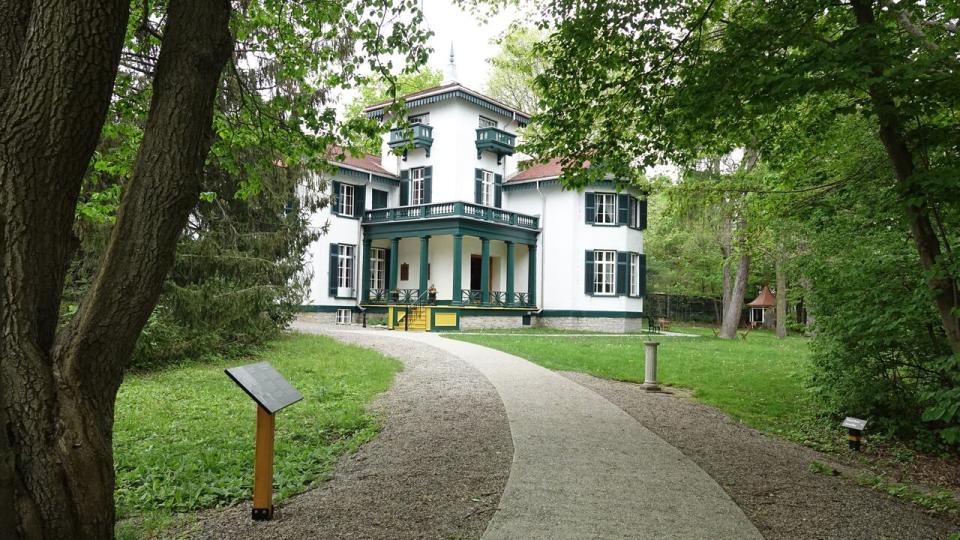
Above the bed in the main room of a villa where Sir John A. Macdonald once slept, there's now a screen playing a video where Indigenous elders share teachings and speak about their hopes for the future.
Cards outlining each of those teachings are available on a table nearby, so visitors can take one with them when they leave.
It's just one of the new exhibits at Bellevue House in Kingston, Ont., but it symbolizes the balance curators of the national historic site have tried to strike — reconciling the role of Canada's first prime minister with the present and ensuring previously-silenced communities have a voice.
Adding layers to the story
Macdonald and his family briefly lived in the house from 1848 to1849. The towering, white and green building is cited as an example of "Italian Villa" architecture and has welcomed tourists for decades.
Bellevue closed to the public in 2018 to undergo repairs. Six years later, it's set to reopen its doors during a ceremony Saturday morning.
The site has traditionally been a celebration of Macdonald's accomplishments as the father of Confederation and prime minister of almost 19 years.
Those elements are still present — there's a detailed timeline of his political life, along with glass of whisky as befitting a man known to enjoy his drink. An elegant outfit is also on display, signifying his reputation as a snappy dresser.
But there's also elements showing a deeper understanding of the impacts of Macdonald's decisions.
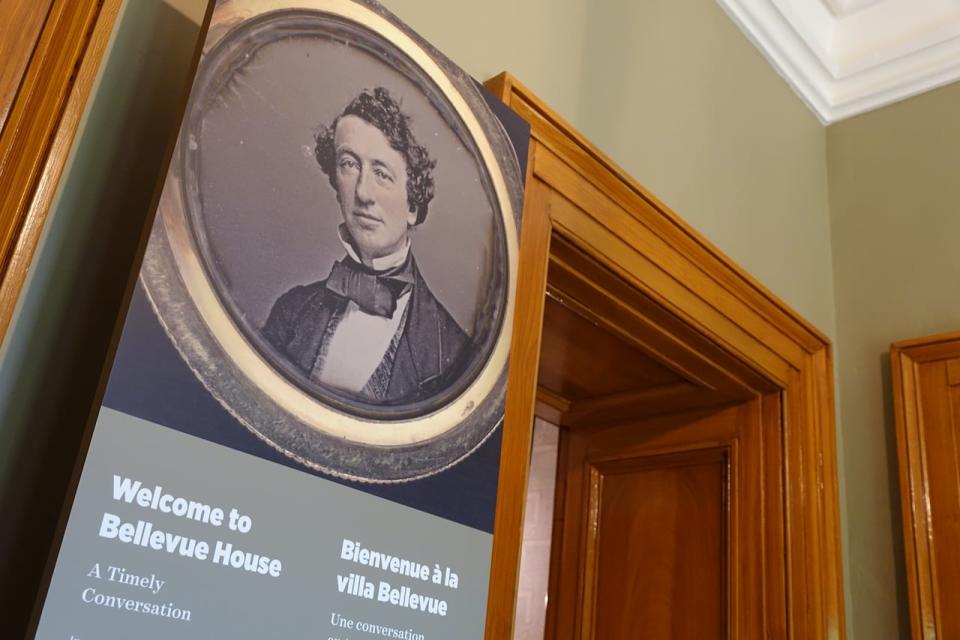
The house was home to Sir John A. Macdonald and his family from 1848 to 1849, before he became Canada's first prime minister. (Dan Taekema/CBC)
"There are people that are likely concerned that we are erasing the history or somehow changing the history of Macdonald and we don't think of it that way, because ultimately those same stories are still part of the tapestry of what's shared here," said Hugh Ostrom, a national historic site superintendent with Parks Canada.
"It's not an erasure or change. It's simply adding layers on complexity to the story."
'You can't sanitize history'
In recent years Macdonald's legacy has come under scrutiny, particularly his role in the creation of the residential school system.
Statues of the prime minister have been vandalized or toppled and his name has been stripped from public buildings and roadways.
Mohawks of the Bay of Quinte elected Chief Donald Maracle knows the realities of residential schools. He said his grandfather was abused while attending one and his great aunt died there.
"You can't sanitize history," said Maracle, who took part in Parks Canada consultations to reimagine Bellevue and is present at the site in the form of a video sharing his people's past.
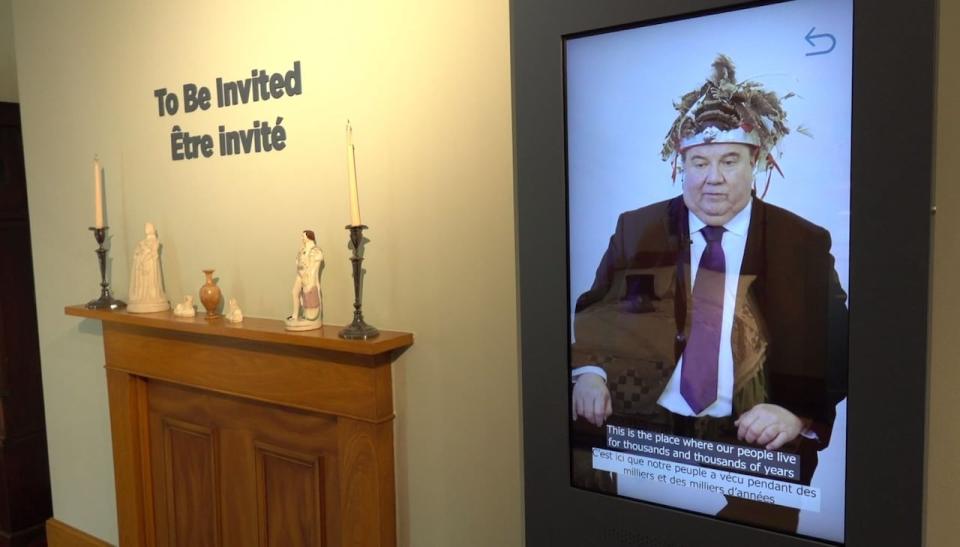
Mohawks of the Bay of Quinte Chief Donald Maracle says Bellevue House now offers a 'more of a balanced education' about Macdonald. (Dan Taekema/CBC)
"I think any place where the Canadian public can learn about the country they live in, and its relationship with the Indigenous people is a good thing," he added. "It's a piece of education, but it's more of a balanced education."
A display in the orchard at Bellevue titled "A Conversation With Many Voices" provides examples of statements commonly said by visitors about Macdonald and acts as a window into the range of opinions on the controversial figure.
One describes him as a "monster," while another notes we "wouldn't have Canada without him."
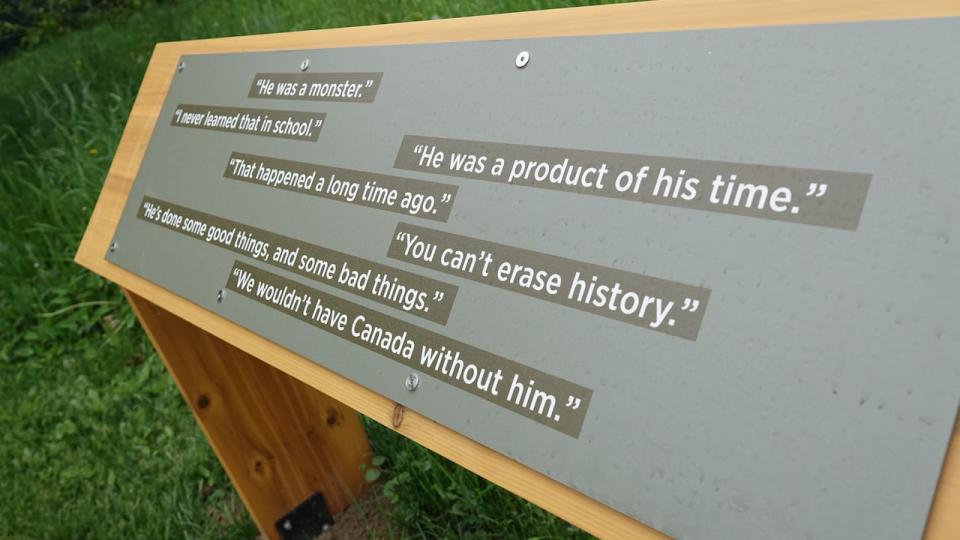
A panel in the orchard at Bellevue House shares a selection of common statements from visitors to the site, providing a window into the complicated legacy of the former prime minister. (Dan Taekema/CBC)
Ostrom said staff with Parks Canada took Bellevue's closure as an opportunity to work with a community advisory committee including racialized and Indigenous members to share their perspectives on the former prime minister.
He pointed to the home's opulent dining room as an example.
While it showcases mahogany furniture, shiny silverware and fine china, the room now begs the question, whose celebrations were stripped away?
A panel on the wall explains acts of parliament that forbid Indigenous people from taking part in their traditions and cultural gatherings as part of assimilation.
"That's a really important message, I think, for people to come and see and recognize that Canada's Confederation has had different impacts on different communities," said Ostrom.
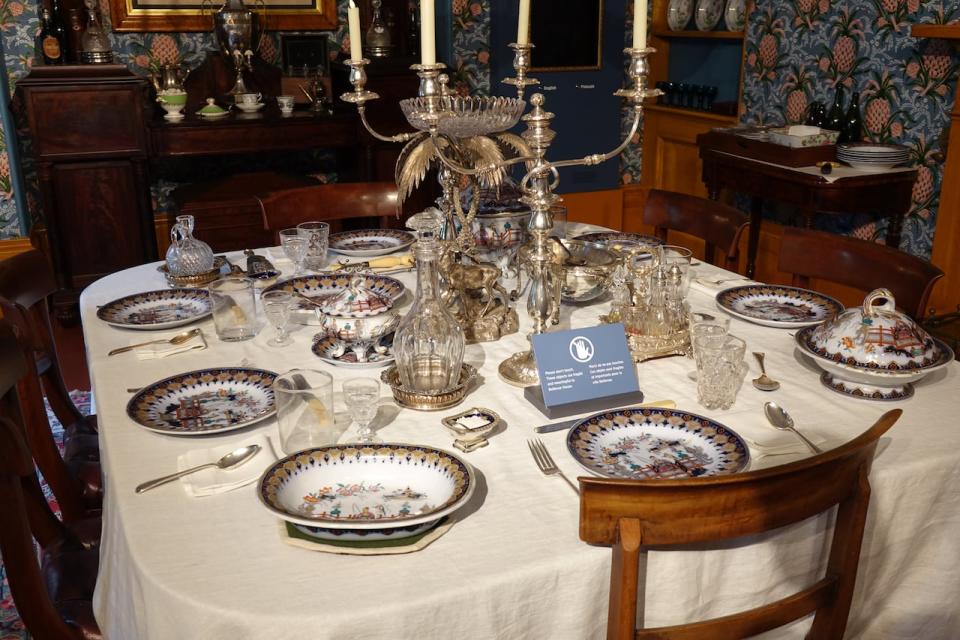
Bellevue's opulent dining room offers a glimpse of Victorian privilege. (Dan Taekema/CBC)
The theme continues on the second storey. One room includes a Gothic revival cradle made of dark wood and deep red fabric that belonged to Macdonald's family.
Next to it is an ornate cradle board, used by Indigenous mothers to carry their babies. Near the door is a desk, part of an exhibit about the lasting damage of residential schools.
Learning to do better
Video screens and audio recordings share pieces of history and perspectives throughout the house and there are also opportunities for visitors to provide feedback.
Staff said they've already noticed the length of the average tour has increased to around an hour and a half.
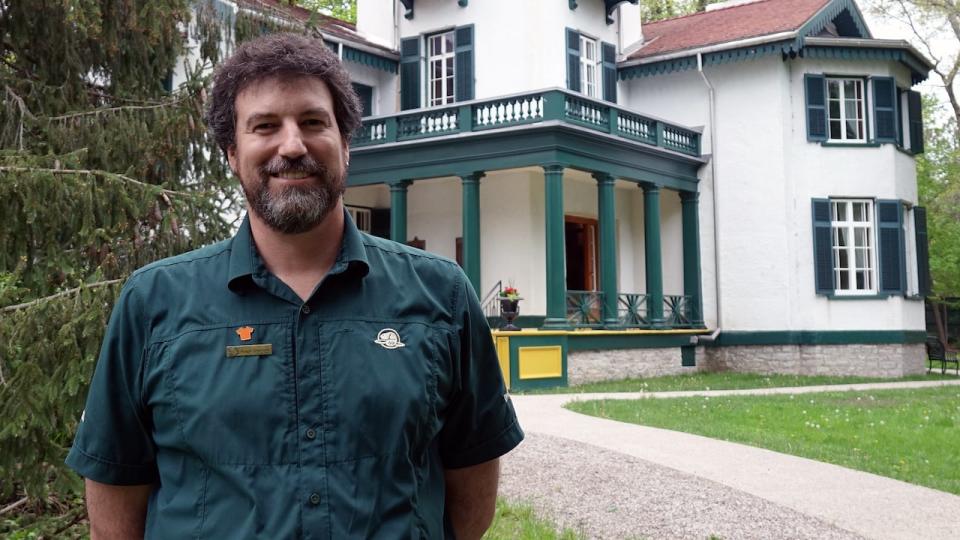
Hugh Ostrom is a national historic site superintendent with Parks Canada. He says Bellevue House has been reimagined to include the voices of people who were previously silenced. (Dan Taekema/CBC)
Maracle, the Mohawk chief, said Bellevue now does a better job of encompassing all of Macdonald's legacy.
He urged Canadians to learn more about the country's Indigenous peoples and their culture.
"If you learn about the history of the country, then that might actually create a desire to do better in the future."

 Yahoo Sports
Yahoo Sports 
